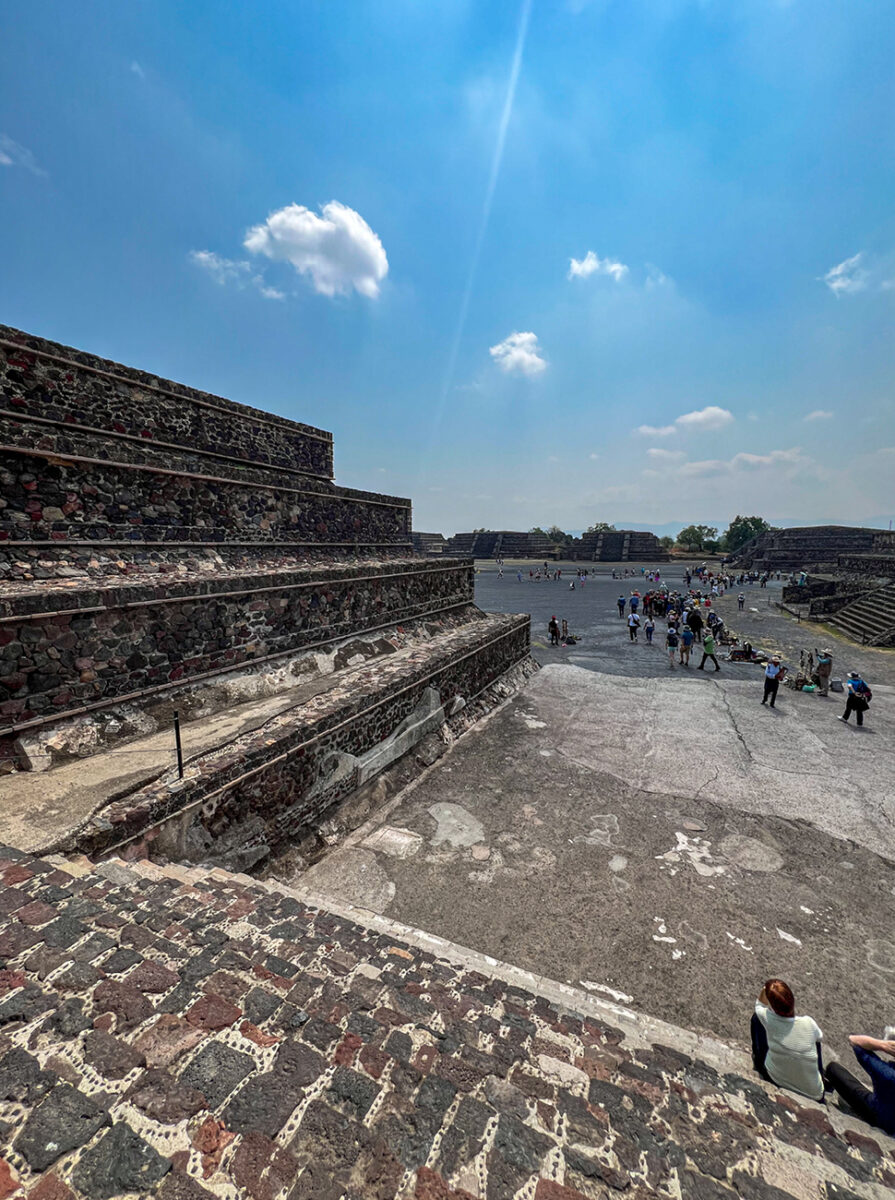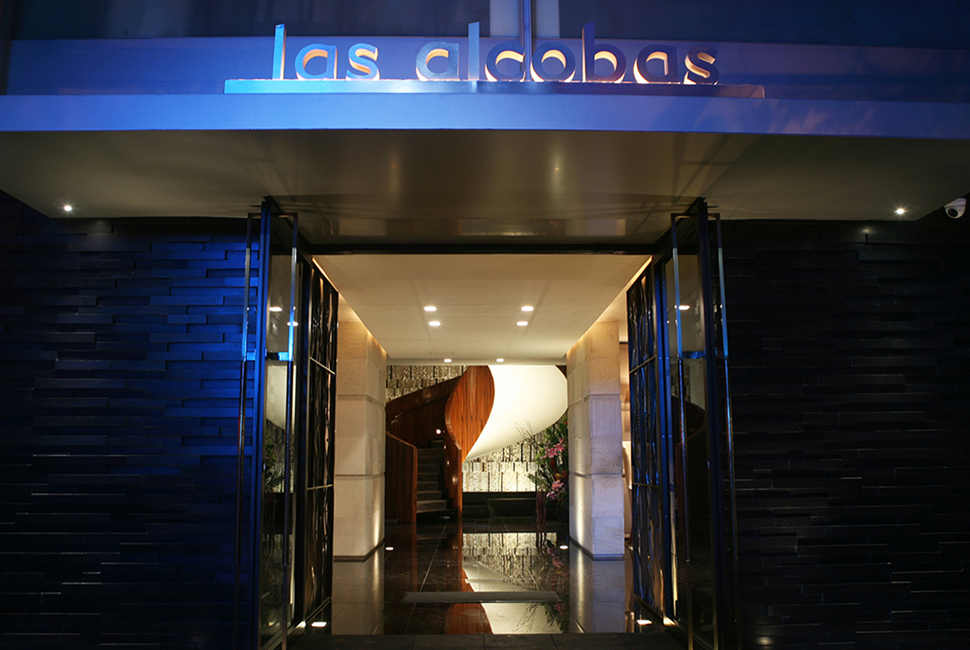

There’s nowhere quite like Mexico City. A vibrant blend of culture, cuisine, contemporary art and charming historic architecture, Mexico’s capital has evolved to be marvelously modern yet remains tied to its rich past.
But beyond the city limits, you’ll find a place that seems stuck in time. Roughly 30 miles northeast of Mexico City proper lies Teotihuacan, an ancient city nearly mythical in legend and scale. Massive pyramids dwarf crowds of tourists and hand-laid streets stretch for miles in a jaw-dropping display of pre-Aztec ingenuity — to say photos don’t do it justice would be an understatement. Embark on your own journey to the past with this visitor’s guide to Teotihuacan, Mexico’s City of the Gods.

What is Teotihuacan?
Home to some of the largest pyramids in Mesoamerica, ancient Teotihuacan is a massive religious and residential complex built with an astonishingly intricate understanding of geometry, astronomy and engineering. The UNESCO-designated metropolis covers nearly eight square miles and was home to up to 200,000 residents at its height around 400 CE, making it one of the world’s largest cities at the time.
Teotihuacan may be one of central Mexico’s most famous archeological sites, but very little is known about the people who built it. The city was already in ruins when the Aztecs arrived, and the inhabitants didn’t leave any written records for archeologists to decode.
The bizarre events surrounding the massive city’s collapse are even more mysterious than its origins. According to archeological evidence, the city was intentionally burned and ransacked around 600 CE, and all remaining inhabitants evacuated just over a century later. Teotihucan’s impressive size, intricate city planning, enigmatic origins and demise make it a legendary attraction to this day and a prime destination for history buffs and amateur sleuths alike.
One quick note before planning your journey into Mesoamerican culture: in an effort to preserve the site for future generations, tourists are no longer allowed to climb the pyramids. But don’t worry — there are still plenty of great photo opportunities around it.

How to Get to Teotihuacan
Thanks to the site’s timeless appeal, there are plenty of ways to plan a day trip to the Teotihuacan pyramids. The most luxurious option is to reserve a private excursion directly through your hotel. If you choose this route, we’d recommend booking through Forbes Travel Guide Four-Star Las Alcobas, A Luxury Collection Hotel. In addition to its prime Polanco address (close to upscale dining and shopping along a serene tree-lined thoroughfare), the stylish retreat will set you up with posh extras like house-made conchas each morning, spa-like bathrooms complete with multi-nozzle experience showers, and a private chauffeur and knowledgeable tour guide to accompany you on your voyage to the ancient ruins.

The Highlights of Teotihuacan
Exploring eight square miles of Teotihuacan ruins can be daunting, but you can easily break down your day into a handful of highlights with plenty of time to wander in between.
If you enter Teotihuacan from Gate 2, the first major site you’ll reach is the Pyramid of the Sun. The imposing structure marking the easternmost point of the city is one of the world’s largest pyramids, at 216 feet tall and 760 feet wide at the base. A small museum nearby offers a brief overview of the pyramid’s significance to Aztec civilization. And while you can no longer climb the structure, a platform directly across the road provides a prime vantage point for photos.
Next, you’ll head north along the one-and-a-half-mile Avenue of the Dead. The site’s main thoroughfare gets its macabre name from the Aztecs, who believed the street was lined with tombs; however, modern archeological evidence suggests these structures were just ceremonial platforms.
As you stroll down the central street, you’ll notice another imposing pyramid straight ahead. This is the Pyramid of the Moon, the site’s second-largest structure and Teotihuacan’s northernmost point. Here’s where the genius of the city’s builders becomes apparent: as you get closer to the Pyramid of the Moon, the structure seems to grow, overtaking the mountain silhouette of Cerro Gordo behind it. This optical illusion is achieved by a precise 13-degree incline along the entire one-and-a-half-mile stretch that makes the pyramid appear larger as you walk closer and shrink as you depart — take photos as you walk down the Avenue of the Dead to see the progression in real time.

Adjacent to the Pyramid of the Moon are the ruins of the Palace of Quetzalpapálotl. In addition to providing some much-needed shade, these ruins offer a peek back in time, showcasing remarkably preserved carvings and murals — the vibrant pigments have kept their sheen even after 2,000 years.
At the opposite end of the complex from the Pyramid of the Moon, you’ll discover the Temple of Quetzalcoatl (or the Pyramid of the Feathered Serpent). So named for the distinct stone serpent heads that adorn it, the pyramid is an active archeological site and one of the only pyramids guests are allowed to summit to watch archeologists at work — safely behind a barrier, of course.
Before you leave, meander to the parking lot at Gate 3 to catch a unique display. Roughly once every hour, a group of local reenactors performs Danza de los Voladores (the Dance of the Flyers), a fertility ritual dating to pre-Aztec Mesoamerica in which four acrobats, attached to nothing but a rope, scale a nearly 100-foot pole before launching themselves into the air and spinning to the ground. The UNESCO-designated feat is a thrilling sight to behold and worth the tip the death-defying performers’ request at the end.

Things to Know Before Visiting Teotihuacan
As with any popular attraction, you’ll want to plan your day accordingly to avoid crowds. The key to getting the most out of your Teotihuacan day trip is to arrive early and hit the main attractions before larger tour buses arrive and the day’s heat becomes oppressive.
Before visiting Teotihuacan, you’ll want to dress appropriately and pack the essentials. Aside from a few subterranean sites and covered areas, the eight-square-mile city is in direct sunlight. Be sure to bring extra protection from the weather, including sunscreen, a hat, sunglasses and possibly even a UPF shirt. Pack plenty of water and a few snacks to sustain yourself throughout your day of exploration. Lastly, be sure to wear comfortable shoes — you’ll get your steps in exploring the sprawling grounds.
